tags:
Squaw Valley, CA, United States |
ski pornography |ski porno |ski porn |ski girl porno |rick sylvester |porno |mike marvin |hot dog the movie |hot dog |earth rider |bob stokes
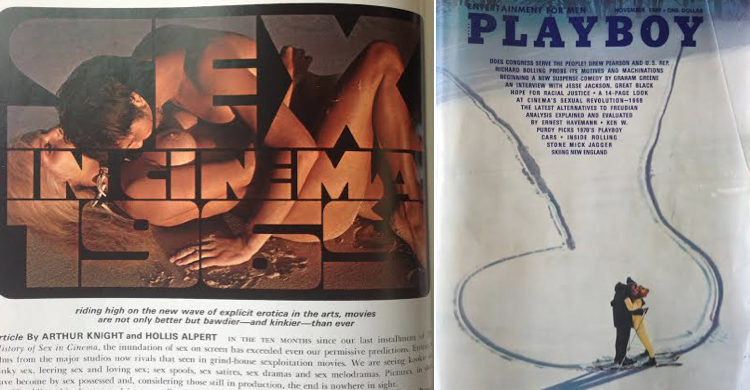
A year before the start of shooting for his first ski film, Earth Rider, Mike Marvin–the future director of the cult classic Hot Dog!–and his production partner, a fellow Squaw Valley boy by the name of Bob Stokes, found themselves packing up stolen camera equipment into their van while deliberating about an unusual opportunity that had come to them from a fame-hungry young man from Beverly Hills named Rick Sylvester, who was willing to risk life and limb in the pursuit of notoriety.
Up until this transition to film, routine in their life had been a schedule consisting of playing music gigs in locations as varied as ski town dive bars in Squaw Valley and Bear Valley to clubs from L.A. to Idaho. They had lived this beat for the greater part of the 60’s. 1971, however, was a record low for folk musicians like themselves. Massive acts like The Kingston Trio had disbanded, while mainstay music festivals such as the Newport Folk Festival would soon close it's gates permanently. Meanwhile, rock music was rising to dominate the charts.
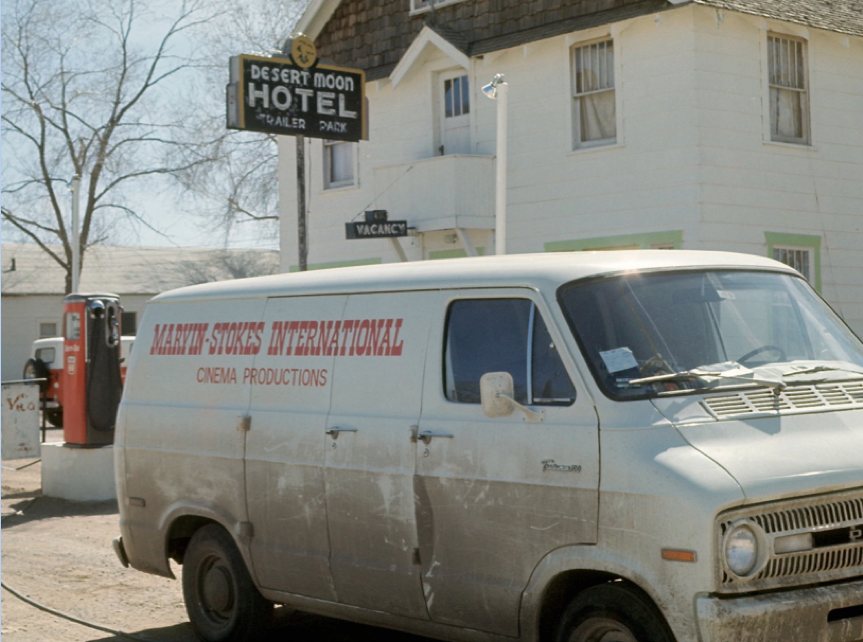 The original Marvin-Stokesmobile, circa early 1970's. Photo courtesy of Mike Marvin.
The original Marvin-Stokesmobile, circa early 1970's. Photo courtesy of Mike Marvin.
“In early 1971, Bob Stokes and I decided to move out of the folk singing business and into making ski movies. I had been shooting Super 8 since late 1967, when I purchased an 8mm Beaulieu from Silver State Cameras in Reno for $300 which we all knew was stolen.
It was used, and never really worked well. But by 1971, Stokes and I connected with my old record producer Max Weiss in San Francisco, who thought he’d help put together financing to produce a ski movie.”
Money Talks
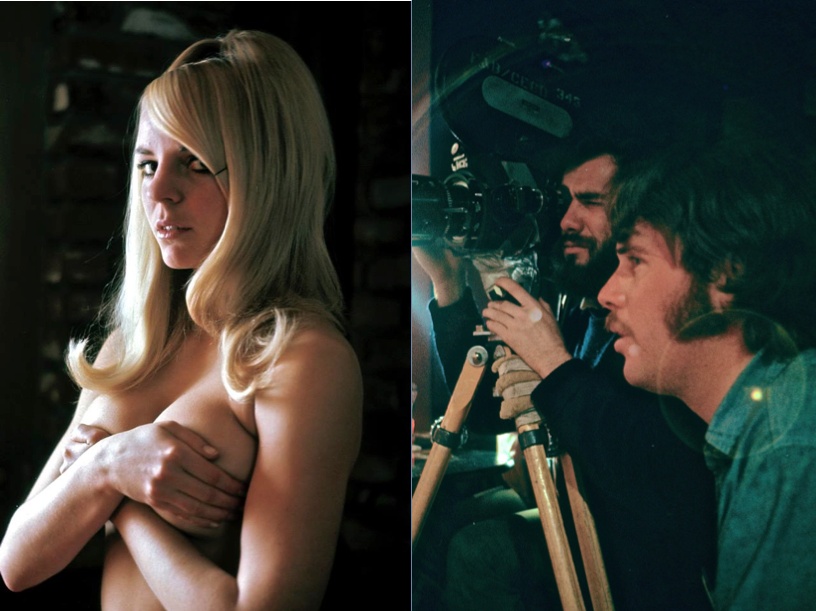 Kris Marvin’s test photo for Playboy
circa 1965, left. Neil Montone films
while Hollywood ski film legend Mike Marvin directs 'Earth Rider', in Aspen, circa 1972, on the right. Photos courtesy of Mike Marvin.
Kris Marvin’s test photo for Playboy
circa 1965, left. Neil Montone films
while Hollywood ski film legend Mike Marvin directs 'Earth Rider', in Aspen, circa 1972, on the right. Photos courtesy of Mike Marvin.
“My wife Kris had been entrenched in a letter-writing campaign to find sponsors. At the time, up and coming magazines, editors, and publishing entrepreneurs in general were always interested in promoting film, so we went to everyone from Hugh Hefner at Playboy to Jann Wenner at Rolling Stone.
I eventually ran this joke on Rocki Aoki [later, of the Benihana franchise], who in those days had been interested in starting a skin mag of his own to compete with Playboy. My film concept at that point I was calling An Infinity Of Crystal, and we were struggling to find the rest of the finance. I ended up receiving letters back from everyone from Rolling Stone to Playboy, saying thank you but no thank you, but Aoki writes me this note that's just marked by a big fat zero. So a week or so later I call back his people and thank them for the large $10,000 dollar check, and they're running around thinking they gave me this money, embarrassed somebody authorized the check trying to figure out how to ask for it back. It was a big joke I ran for awhile. Finding money for films in those days was not. That's where Sylvester first came in."
 Rick Sylvester preparing for the first-ever ski BASE jump off Yosemite's El Capitan. Read about that insane tale here. Photo courtesy of Mike Marvin.
Rick Sylvester preparing for the first-ever ski BASE jump off Yosemite's El Capitan. Read about that insane tale here. Photo courtesy of Mike Marvin.
Much of the rest of the financing would come from a 29 year-old daredevil determined to be to skiing what Evel Kneivel had been to motor sports. Rick Sylvester was a diminutive man despite his hungry ego, standing at just 5’ 6” and weighing in around 135 pounds. Compact, disciplined, and strong willed to the point of no return, he was gifted with an intensity that would account for as much of his accomplishment in pioneering the keystone stunt he was on the verge of becoming known for as much as it would be a thorn in the side of those that fell into the orbit of his quest for fame.
Read Christian's story of how Rick Sylvester performed what might have been the first ski BASE jump in history off the summit of Yosemite's El Capitan.
According to Marvin, Sylvester had been hanging around Squaw Valley for some time telling anyone who would listen that he was ready to leap off of El Capitan with his skis on, and was willing to pay for the feat to be filmed to whomever would step forward. When the rumor about Sylvester hit Bob Stokes’ ears, he passed the story onto his partner, who had been conceiving his debut ski film but had yet to put together the talent for it.
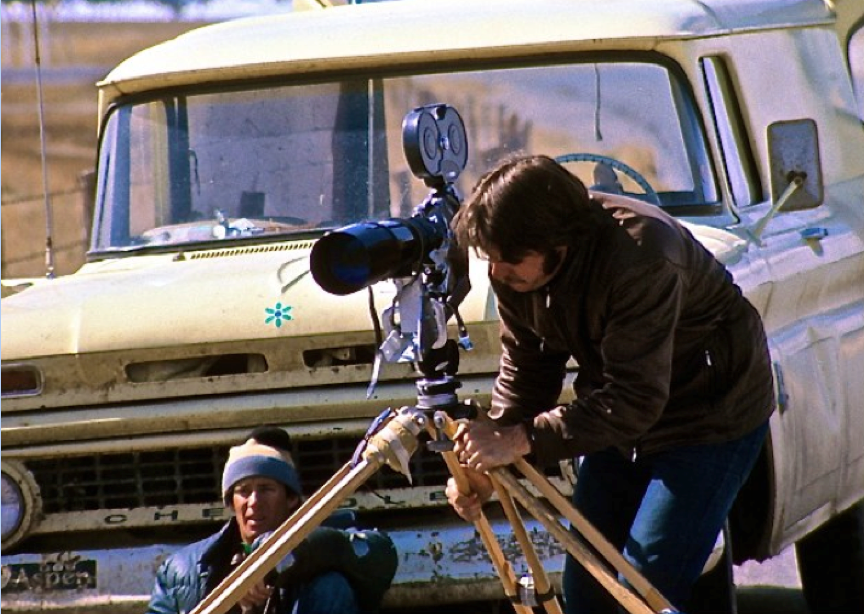 Rick Sylvester, at the left. Mike Marvin,
manning his contraband Beaulieu 16mm camera. Photo courtesy of Mike Marvin.
Rick Sylvester, at the left. Mike Marvin,
manning his contraband Beaulieu 16mm camera. Photo courtesy of Mike Marvin.
“We were out at a local bar one evening and we heard about a guy who claimed he would ski off the edge of El Capitan in Yosemite. At 3200 feet, El Cap is the largest piece of exposed granite in the Northern Hemisphere. Soon after we met Rick Sylvester, 27, a Squaw Valley resident. Jewish, 5’6”, 135 pounds, and no body fat. Strong. Hands like hydraulic vices. Rick was a Yosemite climber and was wired into the big rock climber community.
Eventually we met. Rick was going to finance his jump with $5000 of his inheritance. Another $5000 would be invested into a ski movie we all were working on. But the snow in 1971 wouldn’t cooperate. There wasn’t enough snow on El Cap in late March to pull the stunt off, so we postponed until the following year,” offers Marvin.
From "Ski Porn" To Ski Porn
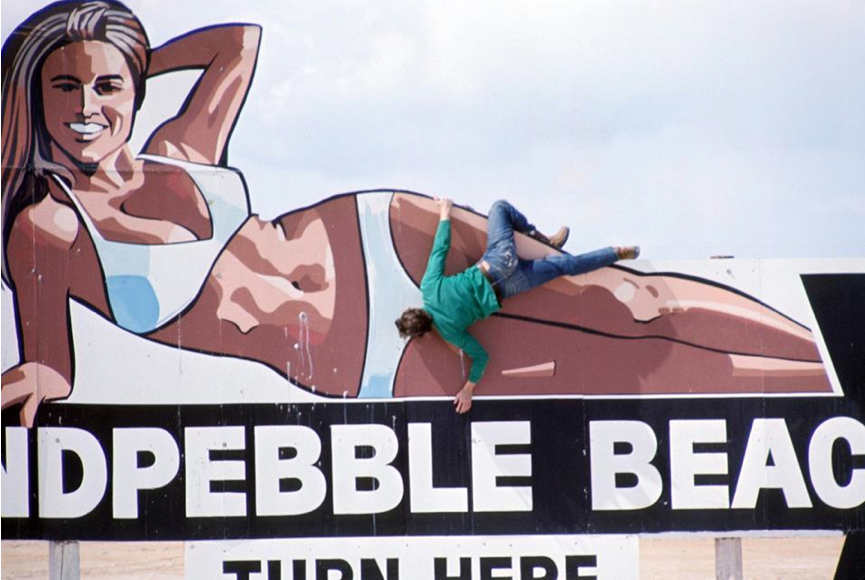 Mike Marvin was a true poster boy for "ski porn" before the term ever gained definition in modern action sport culture. Here, Rick Sylvester demonstrates his “climbing” skills out on the Great Salt Lake.
Mike Marvin was a true poster boy for "ski porn" before the term ever gained definition in modern action sport culture. Here, Rick Sylvester demonstrates his “climbing” skills out on the Great Salt Lake.
With a lack of snow forbidding their original plans to shoot a ski film, and with time on their hands, making a porno sounded like a reasonable means of making some quick cash. Sylvester put up $800 for the budget, and they had a pipeline established for distribution.
“I produced Ski Girl with Sylvester, which we had been foolishly convinced to do by this San Francisco pornographer named Pete Decenzi . Sylvester put up $800, and I shot it in the Squaw Valley lodge. We thought we were going to make a bit of money. It took two days to shoot and three days to edit. We were young, and it was a hell of a lot of fun.”
I produced Ski Girl with Sylvester, which we had been foolishly convinced to do by this pornographer named Pete Decenzi. Sylvester put up $800, and I shot it in the Squaw Valley lodge. It took two days to shoot and three days to edit. We were young, and it was a hell of a lot of fun.
“Basically it was this girl skiing down the slopes that runs into this guy, then you see the guy the knock on the door of a ski chalet, and they get it on–so, straight up fucking. It was porn, man! It ended up never really seeing the light of day, and I got in a lot of trouble with my family for it. The only good thing it did was build my relationship with Sylvester so we could do Earth Rider together.”
Though Ski Girl and other smaller films would set the stage for 1972’s Behind The Green Door, a full-length porno with Marilyn Chambers that was widely credited for ushering in the Golden Age of Porn, Mike Marvin quickly decided that the life of a porn director was not the path for him. Rather, the pursuit of a playboy ski filmmaker would be his calling.
Facing The Family
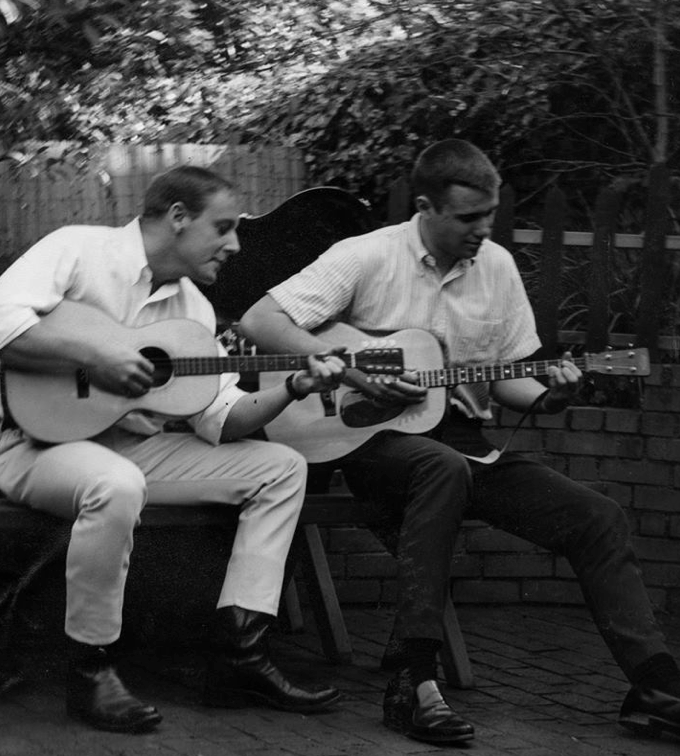 Nick Reynolds (left), a very successful folk musician, looked after Marvin (right) during his youth, and was stern in his disapproval of the porn project. Photo courtesy of Mike Marvin.
Nick Reynolds (left), a very successful folk musician, looked after Marvin (right) during his youth, and was stern in his disapproval of the porn project. Photo courtesy of Mike Marvin.
“I got in big trouble with my family over Ski Girl,” remembers Marvin. A child of divorce, Marvin’s surrogate father was Nick Reynolds–a member of the The Kingston Trio, a group that helped launch the folk revival of the late ‘50s and ‘60s, and who were Capitol Records’ most successful artists until The Beatles came onto the scene in 1964. Reynolds’ disapproval of the ski porn project, hardly a surprise for any parent, let alone forty years ago – put a quick stop to Marvin’s porn experiments.
“He was very adamant I not do it again, and I didn’t. With Nick Reynolds, his disapproval was more than enough for me. I loved him almost unconditionally, so you can imagine when he’d get mad at me, I’d simply stop whatever it was I was doing.”
Marvin also got flak back in his hometown of Lake Tahoe. “There was also this sheriff in Tahoe City that had it out for me ever since I was a kid. His name was Max Bennet, and he typified the corrupt, small-town sheriff in America at the time. Somehow, Bennet caught wind of our filming a porno in Squaw. Later on, even after I’d had all the success with Hotdog!, Six Pack, Predator and other movies like The Wraith , I’d run into this cretin and he’d always say the same thing: “Marvin! Still making that ski porn?!?”
Nonetheless, Marvin’s porno experiment took place amongst broader and more monumental shifts in American culture. With the Vietnam conflict still raging strong, returning veterans sought out new thrills removed from the horror of Nixon’s dirty war, while young people continued to rebel away from a conservative, post-McCarthyist parental culture.
Nonetheless, Marvin’s porno experiment took place amongst broader and more monumental shifts in American culture. With the Vietnam conflict still raging strong, returning veterans sought out new thrills removed from the horror of Nixon’s dirty war, while young people continued to rebel away from a conservative, post-McCarthyist parental culture.
Sex, Skiing, Playboy, and Rock 'N Roll The November 1969 issue of Playboy Magazine.

Marketing heads had, for some time, been employing the association
of sex and skiing to great effect. The 1969 November issue of Playboy [above] featured
spreads as varied as
Northeastern Ski
Resorts
, the Head Stone profile
on Mick Jagger, and back around to a feature dubbed
Sex In Cinema, 1969.
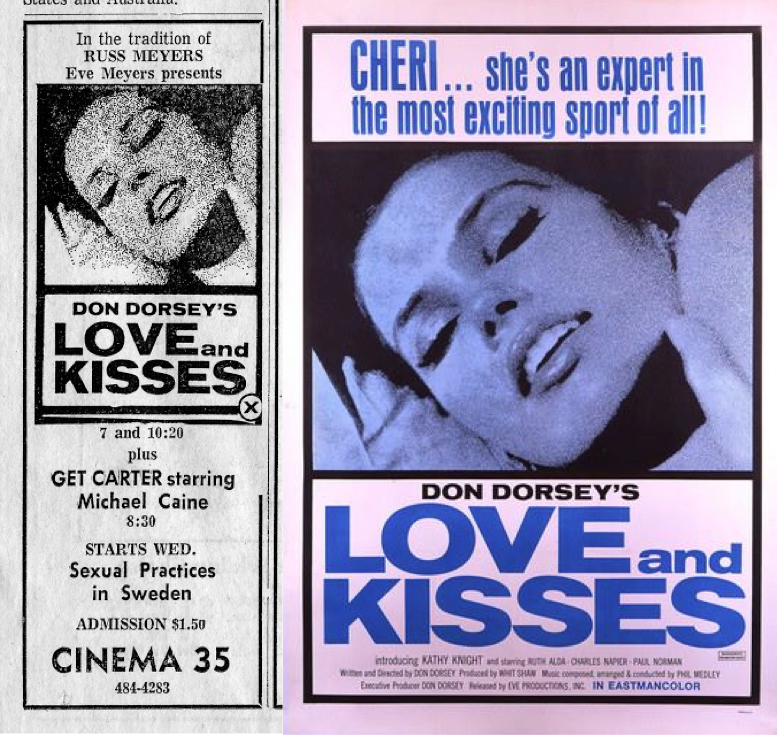 Love and Kisses, shot in the woods of Maine, was actually the first 'ski porn' to makes it way to smut theaters nationwide in 1971.
Love and Kisses, shot in the woods of Maine, was actually the first 'ski porn' to makes it way to smut theaters nationwide in 1971.
A cult cinema fan fact is that Marvin’s Ski Girl was in fact the second ski-themed porn produced in the tradition of former Playboy Magazine top photographer Russ Meyer’s sexploitation films. Love And Kisses, a full feature filmed in Caribou, Maine, featured skiing, snowmobiling, lesbian coupling and all around fornication, and was produced in the same year. The popularity of this breed of cinema was as strong in this bygone era as it is today, as personified by Playboy’s Sex and Cinema, 1969 feature.
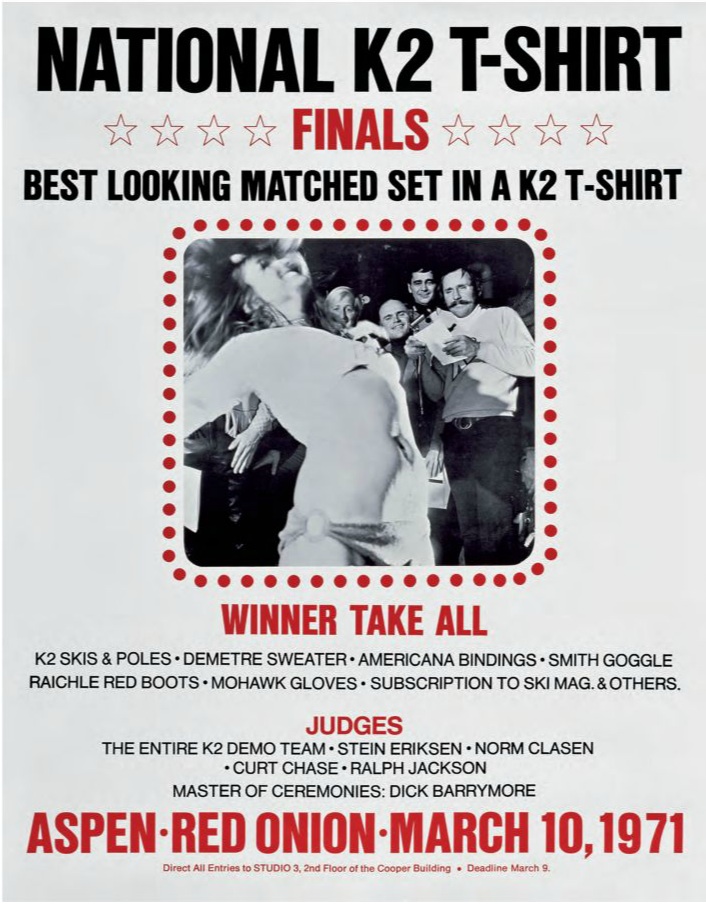 Following the inaugural event at Sun Valley's infamous Boiler Room, the wet t-shirt contest, for better or worse, became synonymous with K2 and freestyle skiing's wild scene.
Following the inaugural event at Sun Valley's infamous Boiler Room, the wet t-shirt contest, for better or worse, became synonymous with K2 and freestyle skiing's wild scene.
By the the time Ski Girl was produced, Playboy had gone on to feature Sun Valley’s infamous Boiler Room wet t-shirt freestyle skiing contest, which is largely recognized as the first instance of organized nipple baring in recorded history. This sparked a movement which Marvin’s soon-to-be filmmaking rival, Dick Barrymore, capitalized on with the filming of The Performers, touching down on Aspen’s legendary Bell Ridge freestyle expose, which had essentially reinvented the concept of the traditional boxed-in style downhill skiing had grown into within a short succession of months. As young people lined the slopes passing out loose joints, jug wine, and hits of the orange sunshine acid, rock music blared from loud speakers lining the course.
By the the time Ski Girl was produced, Playboy had gone on to feature Sun Valley’s infamous Boiler Room wet t-shirt freestyle skiing contest, which is largely recognized as the first instance of organized nipple baring in recorded history.
Ski filmmakers and the magazine industry were, in this era, the pushers of this breed of lifestyle drug. Along with cultural Hollywood hits such as Robert Redford’s Downhill Racer, skiing and its inherent film culture had entered a golden age. And while the 1960’s carried the spirit of surfing to popularity through filmmakers like Bruce Brown and the clean cut sounds of the Beach Boys in their pin-striped shirts spinning choir-boy-soft-rock surfer ballads, in short time, a new climate of sex, skiing, rock n ‘roll and a certain celebrity ski film culture would soon find a nebula to gravitate towards: the rise of freestyle skiing.





